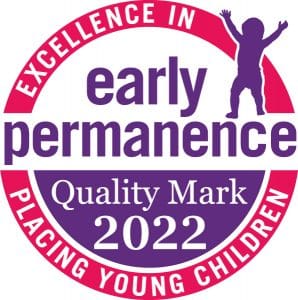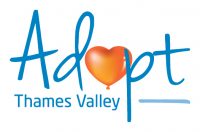Early Permanence
What is Adopting through Early Permanence?
Early permanence planning for children can involve either concurrent planning or Fostering for Adoption. These are arrangements which enable Local Authorities to place babies and young children with their potential future family at the earliest stage. Adopt Thames Valley provide preparation and training specifically to prospective adopters for children in need of Fostering for Adoption.
The role of Fostering for Adoption in achieving early permanence is to provide ‘the child with a temporary foster placement but with the potential for this to become their permanent home if they need to be adopted’ (Fostering for Adoption: A child-centred solution. A guide for prospective FfA carers, CoramBAAF, 2017).
Adopt Thames Valley work in partnership with Local Authorities within the Region to place children with prospective adopters who are temporarily approved as foster carers for that child, where the need is identified. These placements are valuable for babies or very young children, typically under 2 years, where the plan is likely to become adoption and can be used prior to the Court making a final decision about the child’s future. The child’s temporary foster placement with their Fostering to Adopt carer/s would later become one of adoption, provided the relevant court orders are obtained. This means that children can be placed with their future adoptive family at the earliest possible stage, reducing the risk of delay for the child and the potential for them to have to make a further move.
Fostering for Adoption is not the same as traditionally approved foster carers wishing to adopt a child who is Looked After, for whom they have been caring. Concurrent planning is also a different arrangement to Fostering for Adoption. In Concurrent planning there tends to be more uncertainty around the potential for adoption to be the outcome for a child – these arrangements are where the Local Authority have not yet ruled out the likelihood of the child being reunified with birth family.
What are the advantages for the child and for me?
The child is placed with their potential adopter(s) as early as possible, providing stability and consistency of care at an early stage, which enhances the likelihood of them developing a secure attachment.
It allows the early months of the child’s life to be as settled and secure as possible at a time in their development that this is vital
The potential disruption and trauma to the child, caused by having to separate from their foster carer(s) to whom they have become attached, is reduced.
- The carer(s) will be part of the child’s early life experiences and will have a deeper understanding of their life story.
What are the challenges for me?
- The child is very likely to be placed before all the assessments of the birth parent(s) have been fully completed and before therefore the final care plan I known. At this point the Local Authority cannot predict the final decision of the Court
- The court process is typically 26 weeks, around 6 months and can go on for slightly longer if there are delays with assessments
- The child may be placed before all the possibilities for the child to be cared for within the birth family and connected network, have been fully ruled out
- The information available about the child at the point of them being placed with you is likely to be limited and will not be as full as that which you would have access to traditionally at the point of matching. This means the child’s individual needs may not be fully known at the point of them being placed
- The child is likely to continue to have ongoing contact with their birth parent(s) and possibly with wider birth family members up until the final court hearing. You are likely to be involved in supporting contact arrangements, possibly transporting the child to and from family time, until final orders are made, and contact begins to reduce. This might include virtual contact. If you want to know more about contact, you can refer to how some of our adopters have experienced this here (include link to case studies)
- While placing a child in a Fostering for Adoption placement is intended to avoid the disruption of the child’s attachment to their primary carer, until the Court authorises the child’s placement for adoption, the placement remains temporary.
- Fostering for Adoption carers have no legal rights over the child if their care plan changes and the child needs to be moved to an alternative placement
Will I be entitled to adoption leave and pay from my employer?
Since April 2015, prospective adopters who foster their child prior to adopting them are eligible for adoption leave and pay https://www.gov.uk/adoption-pay-leave It is likely you will be required to leave work at short notice if you have a child placed with you through Fostering to Adoption, and therefore you will need to have supportive employers.
As a foster carer, you will be entitled to a fostering allowance from the Local Authority responsible for placing the child, which will end when the placement becomes one of adoption.
Is Fostering for Adoption right for me?
There will be a number of things you will need to think about in relation to Fostering for Adoption. Initially, as a foster carer, you are caring for the child under the direct supervision of the Local Authority so you will need to consider whether this is something with which you are comfortable, primarily the fact that you will not be able to regard the child as your own. You will need to be mindful that you are not yet ‘mummy and daddy’.
It is very likely you will go on to adopt the child, but you will need to be able to manage the uncertainty of the potential outcomes. You will need to think about the possibility of the Court not agreeing a plan for adoption and the child leaving your care. If you already have a child, whether they are a birth or adopted child, you will need to consider the impact on them as well as yourselves if the child does not remain in your care. Preparation and support for other children in the home is essential.
It is important for you to consider what support you might need around you and how you typically deal with stressful or painful situations – there are specific issues about preparing for the period of uncertainty in the fostering phase of Fostering for Adoption. You will be encouraged to discuss this with your family members and close friends. Members of your network may have questions and views themselves, but they also need to be a reliable source of support for you.
As there will be ongoing social work visits, and possible birth family contact, the geographical location of the placement will need to be taken into consideration and balanced against the risk of proximity to birth family. The child’s needs will be central to decision making around placement location.
You can discuss all of the implications with your assessing social worker during your home study and there will be information available during the preparation stage as you journey towards becoming an adoptive parent. It can be arranged for you to talk to other adopters who have provided Fostering for Adoption placements to give you more of an idea of how this type of placement might impact on you and your family. Adopt Thames Valley also provide a one-day training event on Fostering for Adoption for prospective adopters.
Resources
If you’d like to learn more about some of the challenges and rewards of Early Permanence in general, you can listen to the experiences of other adopters via First4Adoption Webcasts. And you can also download the ATV Guide to Adopting through Early Permanence below.
ATV achieves EP Quality Mark

In May 2022 Adopt Thames Valley achieved the EP Quality Mark which recognises excellence in placing young children. ATV is just one of three RAAs so far to have achieved the mark.

If you would like to find out more or are ready to begin your adoption journey then we would love to hear from you today.

There are two stages in the process of adoption which we aim to complete within six months - find out more about the adoption journey.

All adopted children are different and over time they will learn to trust you and it will transform their lives – as well as yours!

